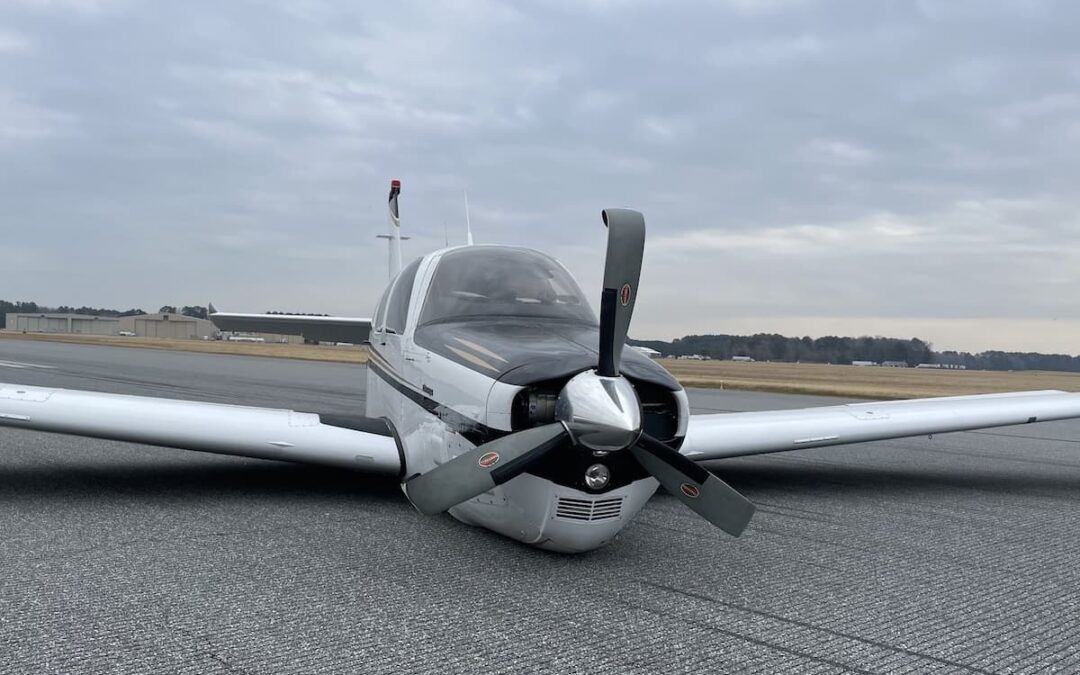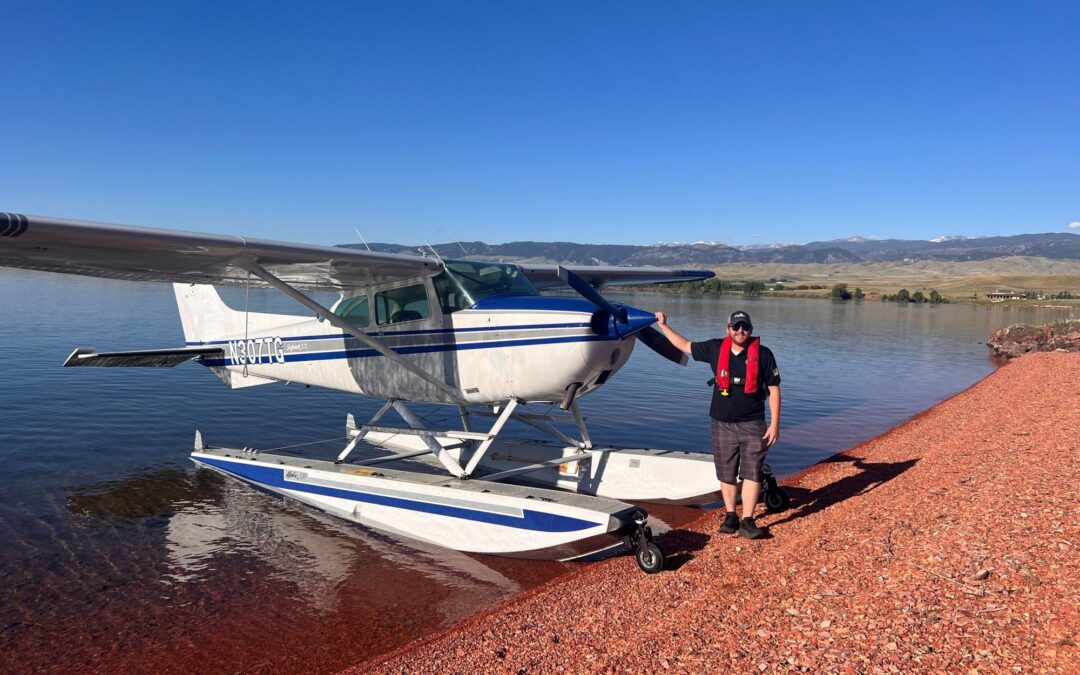Maybe it’s the Georgia flying weather, or maybe it’s the ever-increasing emphasis on “old” pilot instead of “bold” pilot, but it seems that flight planning these days is a lot more about if and when than about route and altitude.
This present trip was supposed to have been to spend Thanksgiving with my sister and her family in Knoxville, Tennessee, but weather and the nation’s newest pastime, upper respiratory infections, squashed it. The trip was postponed to Super Bowl weekend in February.
For this excursion, the direct route from Savannah, Georgia, to Knoxville is over the Great Smoky Mountains. It’s only two hours by RV-9A, but there are gotchas lurking in the flight planning. For instance…
When I was at Gulfstream, one of my test pilot buddies shared that his en route minimums for single-engine flying are 1,000 feet. That means that if the engine goes pfft in the clouds, you’ve still got a screaming chance of finding something soft to run into when you break out. This rational and reasonable concept took a while to break through my steely-eyed self-image of being more capable than that, but it’s now firmly in my mental ops book. Even so, there’s lots of countryside in the Southeast where it’s all forest, devoid of landing sites.
It was now time to plan the trip. The route is simple, GPS direct, but…there’s my personal 1,000-foot en route ceiling requirement, and those silly Smoky Mountains. Mountain obscuration means finding another route, nonnegotiable. Even though synthetic vision might help me perform an emergency descent to a valley that might not be cloud filled, that’s pretty sketchy as a risk-mitigation strategy.
Also, from when I lived out West, there was the mountaintop clearance guideline—1,000 feet for every 10 knots of wind, with 30 knots meaning no-go. That maxim doesn’t seem as well-known in the East, however.
So, the goal was to balance winter weather in general, weather north of the Smokies, coastal weather south of them, and making it safely to Knoxville by Sunday afternoon. Fortunately, my sister understands risk aversion, and the invitation was for Sunday, plus or minus as many days as necessary. Ideally, I would have flown up Saturday and used the flex time on the back end, but the weather wasn’t looking good. I wasn’t totally ready to fly on Thursday—household chores and such—but the weather was good, and Friday’s weather was maybe OK in the morning. Maybe. I scrambled and packed.
Takeoff was just a bit behind schedule at 2:20 p.m., and the air was marvelous, smooth VFR under high clouds the whole way. There were numerous smoke plumes from burn-offs, and some smoke along the ground, but visibilities were as good as I’ve ever seen in the Southeast.
Dealing with ever-changing clouds can present a significant challenge.
I always have four hours plus of gas on board for a nominal two-hour flight, and engine on to engine off time was 1:59. Pure skill, of course. And really fat fuel margins. (Unless I’m planning to land at a big airport and tolerate the higher fuel prices, I try to land with two hours of fuel in case the pumps aren’t working and I need to go somewhere else. That technique has saved my bacon three times now).
As for the alternatives, mountain obscuration would have meant a detour around the western end of the Smokies near Chattanooga. That would only have added 20 minutes, and all that could be done IFR if required. The altitudes could have been low enough that I could have avoided icing. But if I was going VFR over strange territory, I would want lots more than 1,000 feet agl. Higher means flying over airport traffic patterns, not circumnavigating.
There was one time, coming back from Oshkosh, Wisconsin, that I did the Chattanooga zigzag due to mountain obscuration. It wasn’t a big deal, but after a long week at EAA AirVenture and a long day in the airplane, the detour wasn’t appreciated.
But there are other considerations in the if/when, go/no-go decision-making. In the summer in coastal Georgia where Savannah lies, the default weather forecast is low ceilings and visibilities in the morning, and cumulus and scattered thunderstorms in the afternoon. The “plan” is to depart in that time gap.
But there’s even more to it. Often, north of Savannah all the way to the Smokies, weather can still be well below my 1,000-foot minimum ceiling when the weather is tolerable IFR in Savannah. The solution, several times now, was to fly IFR due west a ways, get gas, and then make a break for it and head north.
With my risk profile, IFR really means ignoring crappy VFR and VFR cloud clearance requirements. The 1,000-foot en route ceiling means that approach minimums never come into question. But all of my IFR practice is to minimums, both hand flying and using the autopilot. Personal minimums are for flight planning, but if unforecast stuff happens while you’re in the air, you have to deal with it, minimums or not.
Bouncing [in turbulent air inside an RV-9A] means fatigue, and that means stress that can lead to poor decision-making and decreased skills…
Then there are winds aloft. The two considerations are turbulence and headwinds. The RV-9A has a light wing loading and a very bouncy, uncomfortable ride in turbulence. Bouncing means fatigue, and that means stress that can lead to poor decision-making and decreased skills—and all that is worth avoiding, especially on a daylong trip.
And then there’s headwinds. In that wonderful Cessna 175 I used to have, there was one trip flying home from Oshkosh to Seattle when all of Montana was bumpy, with 50-knot headwinds. Trying not to miss an extra day of work meant sucking it up and bouncing along, being grateful there was no freeway beneath us where we could watch cars going faster than us. And managing fatigue in the hot cockpit flying into the sun still had to be taken into account.
A similar encounter was going home to Arizona from Houston with horrific headwinds. On the radio, I heard somebody going the other way with those nice tailwinds. I couldn’t quite bring myself to cheer for him.
There was another interesting trip from Arizona to Houston to visit my parents. The weather looked good, except there was a thunderstorm forecast for Houston. Boy, was that accurate as a big old honkin’ Texas thunderstorm flooded all the streets. If Southeast Texas was proficient at making tornadoes, there would have been one—a big one. We landed short of our destination and drove the last two hours in an IFR-equipped rental car that was, relatively speaking, thunderstorm-tolerant.
Overnight stays can be interesting in small towns, especially in getting rides not to the hotel but back to the airport the next morning. I remember one overnight in a small town in Montana where the main street was perfectly aligned with the setting sun and with no clouds. Big Sky Country really meant something there. The next morning in the cafe, the local pastor was having breakfast with six farmers. You don’t get those kinds of experiences at big city airports, although you don’t have to beg for a ride back to the plane. But it’s hard to figure out in advance what ground food and transportation alternatives might be.
Completing a well-executed flight, enjoying the beauty of the ground and sky, and avoiding the hassle of airlines and automobiles make small plane flying so rewarding…
So what are the common threads in all these trips? Risk aversion, of course. Take all that the weather gives you, but absolutely no more than that—and with a bit of cushion.
If you absolutely have to be somewhere on time, go with Plan B. There was one Savannah-to-Oshkosh trip where the plane was all packed, and at the last minute, unforecast weather screwed things up. I drove to the airport, unpacked the plane, and drove to Oshkosh, two long, miserable days in the car, including that perpetual traffic jam in Atlanta.
There are always two considerations when encountering winds aloft: turbulence and headwinds.
Another year, there was an ugly front between me and Oshkosh, and I had a three-day window to make the flight. The long and the short of it was that I could have flown halfway but then would have waited out the weather there for the first three days of AirVenture. I broke down and used airline miles. The decision was reinforced when the airliner made a massive detour around the front with a 90-degree turn to Chicago.
Most of us fly for fun. Completing a well-executed flight, enjoying the beauty of the ground and sky, and avoiding the hassle of airlines and automobiles make small plane flying so rewarding—even if it’s a few days earlier or later than we would really like.
And when that enjoyment is not to be had on a reasonable schedule? That’s what Plan B is for.
The post Long Trips & Small Airplanes appeared first on Plane & Pilot Magazine.




